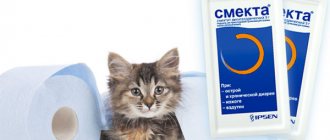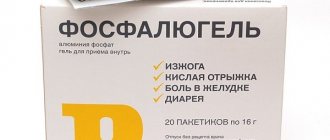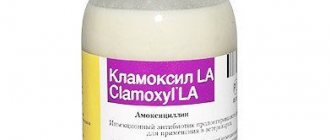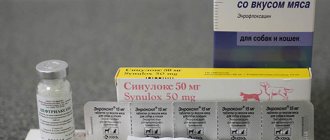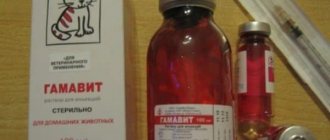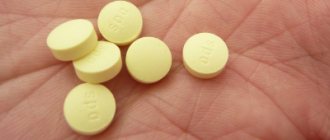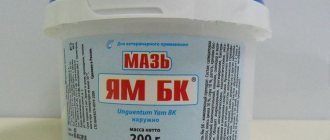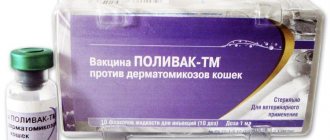What is an enema and how does it work?
The dog may have intestinal problems or illnesses that require cleaning out the digestive tract. It is not always possible to give an animal a laxative. If the dog does not want to take the medicine orally or there are contraindications for this type of treatment, the animal must be given an enema.
Enemas are the introduction of liquid into the lower rectum or colon using a special device. Water has high thermal conductivity, heat capacity, availability and wide distribution, therefore hydrotherapy is indicated for the treatment and prevention of many diseases. The enema has mechanical, chemical and thermal effects. Enemas have:
- Cleansing and antitoxic effect - the intestines are freed from accumulated feces, waste products of microorganisms and parasites.
- Stimulating intestinal motor function - water has an irritating effect on the receptors of the intestinal mucosa. Depending on the composition of the substances dissolved in it, water has different effects. Tap and distilled water are more irritating than isotonic or hypotonic solutions. The starch solution has an enveloping effect, the warm solution relieves spasms and relaxes the intestinal walls.
- Distracting effect - hypertonic solutions promote fluid redistribution during cerebral edema, lungs and heat stroke.
- The medicinal solution exhibits therapeutic properties.
- Nourishing action.
Enemas vary in composition and depth of penetration, as well as temperature. In accordance with their purpose, the following types of enemas are distinguished:
- siphon;
- cleansing;
- thermoregulatory;
- contrasting;
- nutritious;
- medicinal.
Enemas are prescribed for various diseases and pathological conditions.
Instructions for use
For constipation, Vaseline oil is usually given orally, preferably on an empty stomach . The required dosage is calculated based on the weight and age of the dog.
Dosage
For 10 kg of weight – 1 teaspoon of Vaseline oil. If the dog is a dwarf breed , then half a teaspoon will be enough for it. Should be taken 1-2 times a day on an empty stomach.
How long does it take to work?
The oil begins to act after about 5-6 hours, and the dog has a bowel movement. If you use Vaseline oil as an enema, the process usually happens faster, in about 5-10 minutes.
It is very important not to overdo it with the drug and strictly follow the instructions for use. For long-term constipation, treatment is carried out over a course, usually five days.
A one-time overdose is not dangerous for a dog, but if you give the animal oil for more than five days, this can lead to disruption of intestinal motility and loss of intestinal tone . The absorption of vitamins such as A, E and K is also impaired, which leads to hypovitaminosis.
Why is a dog given an enema?
Types of enemas and indications for their use vary. For example, cold water enemas are used to reduce the animal’s body temperature, and warm water enemas are used to relax the intestines. Enema the dog according to indications:
- with increased or decreased body temperature;
- in case of violation of the act of defecation;
- for food poisoning;
- to prevent intoxication by decay products during the treatment of helminthiasis and mass death of parasites;
- for diseases that cause inflammation of the intestinal mucosa;
- when preparing a dog for a study of the state of the digestive system;
- for introducing medicinal and nutritional substances into the animal’s body.
It is advisable that the procedure be prescribed by a veterinarian, since there are a number of contraindications for which hydrotherapy cannot be used in therapy.
Purpose
For veterinary purposes, specialists use petroleum jelly when small foreign objects are detected in the digestive tract if:
- there is no need for emergency surgery;
- there is no threat to the pet’s life;
- no signs of internal bleeding were found;
- there is a high probability that the foreign body can leave the body on its own in the feces.
In this case, Vaseline oil is used to speed up the process of removing the foreign body from the body through the intestines.
If the dog swallows an inedible object
With the arrival of a puppy in the house, the owners have more troubles. It is important not only to provide your pet with a healthy and nutritious diet, organize a place and train, but also to ensure the safety of the animal. You will have to be especially careful when cleaning the house, not leaving any of the following on the floor or furniture:
- small, hard and sharp objects;
- handicraft supplies (needles, scissors, etc.);
- candy wrappers, foil wrappers, etc.
The dog’s diet should not contain tubular and sharp bones, river fish, which contain a lot of small bones, seeds, nuts, crackers and similar foods that can damage the pet’s esophagus, stomach and intestines. You should also make sure that someone else does not treat your dog with such “treats”, so that the dog does not pick up anything from the ground while walking on the street.
But it is impossible to foresee everything and monitor the animal 24 hours a day. If it happens that your dog has swallowed something illegal and dangerous, you should take action as soon as possible, especially if there are symptoms indicating that a foreign object is stuck in the mouth or esophagus. This can be determined by characteristic features.
If a foreign body is stuck in the mouth, the dog may:
- excessive salivation;
- swallowing dysfunction;
- urge to vomit.
The dog loses interest in food, shakes its head, shakes it, rubs its cheek against furniture and other objects and tries to get the stuck object out of its mouth with its paws.
If a foreign body is stuck in the larynx, the dog loses appetite, the temperature rises, breathing problems appear, and signs of suffocation are possible. Upon examination, the veterinarian may notice swelling of the larynx. If your dog swallows a sharp object, you may see blood in your saliva when coughing. The dog should be taken to the vet immediately.
Damage to the esophagus and stomach is especially dangerous. Signs of esophageal injury:
- lack of swallowing reflex;
- vomiting after feeding, sometimes with white foam.
To relieve its condition, the dog often stretches its neck. Trauma to the esophagus is dangerous; it is fraught with rupture, inflammatory processes in the esophagus and necrosis of its tissues.
In most cases, small foreign objects swallowed by a dog pass safely through the esophagus and stomach, but become stuck in the small intestine. The following symptoms may indicate this dangerous condition:
- the dog does not eat at all, but feels constant thirst;
- she suffers from severe vomiting;
- the animal’s condition is serious and deterioration is increasing;
- if the intestinal walls are damaged, bloating will occur;
- There is no intestinal peristalsis, the dog cannot defecate.
Important!
Any suspicion that the dog has swallowed an inedible object is a reason to immediately contact a veterinary clinic.
X-ray examination is used to determine the presence and location of a foreign body in the animal's body. After this, the veterinarian determines whether it is necessary to perform surgery, or whether it is possible to do without surgery, stimulating the natural removal of the foreign body from the animal’s body using laxatives. Among others and more often than others, Vaseline oil is recommended.
The essence of therapy with Vaseline oil is that it envelops a foreign object in the intestines and removes it from the body with feces.
Important!
You should not give Vaseline oil to a dog on your own if you suspect the presence of a foreign body in the intestines. Only a specialist can determine the danger of injury, and in case of intestinal obstruction, any laxatives are prohibited.
You should not give oil if the dog has swallowed a bone or object with hard corners or sharp edges. As it passes through the small intestine, there is a high probability of causing further injury.
What volume of solution
To prepare the solution, use the following substances:
- boiled and chilled water;
- a decoction of chamomile, St. John's wort, yarrow;
- baking soda;
- table salt;
- potassium permanganate;
- Vaseline oil;
- fish fat;
- medications prescribed by a veterinarian.
The enema is filled with warm water – 36-37°C. For cold ones - at least 25-30°C. The amount of liquid depends on the size of the dog and the type of enema. Cleansing for large dog breeds is given in a volume of 1 liter, for medium dogs – 200 ml and for small breeds – up to 50 ml. Therapeutic microenemas are made for rapid absorption of medicinal substances, and their volume is small, as a rule, does not exceed 10-50 ml, depending on the breed of dog.
Is it possible for puppies?
Vaseline oil can be given to puppies for constipation, but naturally the dosage will be different from an adult dog . If it is usually 1 teaspoon per 10 kg of weight, then the puppy needs a dose of half a teaspoon.
You can also give puppies an enema with Vaseline oil. Only for this you will need not a bulb, but a two-cc syringe. The oil is heated to about 25 degrees, 2 ml is drawn into the syringe, the spout is lubricated with baby cream and inserted into the puppy’s anus.
The effect of the enema will begin in 5-10 minutes , and the baby will be able to defecate.
Purpose of different types of solutions
Before any type of enemas, the intestines are washed with warm water, heated to the animal’s body temperature. For intestinal atony, constipation and prolonged absence of bowel movements, an enema with the addition of glycerin or a soap solution is recommended. The liquid softens stool and stimulates peristalsis for rapid elimination of intestinal contents. In case of prolonged constipation, it is recommended to use water heated to 35°C for the solution, and in case of atony - cold water, the temperature of which is 17-23°C.
A siphon enema is designed to remove feces, flush out excess mucus, microorganisms, and toxins from the dog’s intestines. For siphon, use a slightly pink solution of potassium permanganate or salt, heated to 40°C.
To loosen the intestines and normalize tone, use glycerin, petroleum jelly or isotonic saline solution. It must be held by pressing the animal's tail to the anus.
A nutritional enema is given up to 4 times a day if the dog has no appetite and the animal is weakened. After introducing the solution, it must be kept inside for 10-15 minutes to improve the absorption of nutrients.
For through rinsing of the digestive organs, the tip of an Esmarch mug, lubricated with Vaseline, is inserted into the anus and raised to a height of 1.5-2 m to increase pressure and ensure the transport of water into the stomach. If the animal starts vomiting, then the operation was performed correctly.
Rinsing is done until almost clean water appears from the dog’s mouth. After this, the tip is removed and the dog is walked to stimulate peristalsis. After a few hours, appetite and digestion improve.
Oral administration of petroleum jelly
As we have already said, the decision on the need to give Vaseline oil is made if the dog cannot defecate within two days, no more. If your pet does not poop for a week or more, no amount of oil can correct the situation, the animal needs to be taken to the vet immediately!
How can you tell in advance that your dog has some difficulty defecating? This is easy to do: if your pet does not go for walks during walks, but sits all the time under the nearest bush, painfully straining and whining, there is every reason to visit the veterinary clinic. Also, animals with severe constipation become lethargic, try to move less, and their stomach may become noticeably bloated (the intestines are overcrowded with feces and intestinal gases). In such cases, we would recommend that you definitely contact your veterinarian: even if he cannot examine your pet in person, he will certainly give advice on the dosage of Vaseline oil.
What is the dosage of liquid paraffin? If you are unable to contact the clinic, focus on a dose of 0.5 ml per kilogram of your pet’s live weight. You should not take more than 20-30 ml of Vaseline oil at a time. If you need to give the medicine again, the dose should be completely reduced to 10-15 ml. But this only applies to animals whose weight is up to 8 kg. If your pet is noticeably heavier, the dose is halved. In severe cases, Vaseline is given every hour, but it is highly recommended to maintain a five-hour interval between doses. You should not give the drug more than five times a day.
The main problem is that, despite the complete absence of smell and taste, liquid paraffin is a “treat” that does not really stimulate the dogs’ appetite. Therefore, very often you have to pour it directly into the dog’s throat, using a regular syringe without a needle. We strongly advise you to make sure you swallow it and take your time! We have already talked about what happens to dogs who inhale Vaseline oil.
You can try mixing the drug with thick porridge and giving it to your capricious pet with a spoon. Remember that when forcibly administering Vaseline oil, the dog must sit, but not lie down! It is very important. If the dog's weight does not exceed a couple of kilograms, enlist the help of an assistant: he will hold the animal in his arms, holding its head and paws, while you calmly pour the oil into the pet's mouth.
Injecting oil using an enema
Considering all of the above, it is not surprising that many veterinarians today advise using liquid paraffin exclusively in the form of enemas . When administered rectally, the drug has the same effect, but you do not risk your pet’s health.
Please note that pure petroleum jelly should not be injected into the animal’s rectum.
First, beat it with warm boiled water so that a stable, homogeneous emulsion is formed. Again, I would like to recommend that owners of large and strong dogs contact a veterinarian in such cases, since they are not always able to control their pet on their own. If the dog resists, you may unwittingly damage his rectum.
Contraindications to treatment
Before giving your pet an enema, it is necessary to consult with a veterinarian, since in some conditions the procedure may be ineffective, and in some cases, threaten the life and health of the pet. Hydrotherapy should not be used if:
- large loss of fluid, so as not to dehydrate the dog’s body even more;
- suspected volvulus;
- the presence of cracks, tumors in the intestines;
- internal bleeding;
- systemic pathologies in the acute phase;
- heart and kidney diseases;
- any damage to the intestines (hemorrhoids, anal fissures, ulcers, injuries, ruptures).
Pregnant and lactating dogs are given an enema only as prescribed by a doctor and with great caution. Often, when an animal is poisoned, a siphon enema of a large volume of liquid is recommended. It is not recommended to carry out this procedure on your own, so as not to cause intestinal injury. Siphon hydrotherapy should be carried out with the participation or under the supervision of a veterinarian.
Contraindications and side effects
Vaseline oil does not contain components that can cause serious negative consequences for the health of the animal, however, like any other medicine, it has restrictions on its use.
The laxative should not be used:
- in case of individual intolerance, therefore the first time you give oil to a dog, you should be extremely careful;
- inflammatory processes in the abdominal organs;
- pregnancy - the drug stimulates uterine contractions, which can lead to miscarriage or premature birth;
- high body temperature;
- intoxication of the body with phosphorus and its derivatives;
- suspected internal bleeding, requiring immediate contact with a veterinary clinic;
- intestinal obstruction.
An overdose of Vaseline oil is not dangerous for pets, but you should stick to the dose prescribed by your veterinarian. The second limitation is the duration of the course - a laxative should not be given for more than 5 days in a row, as this can lead to disruption of intestinal motility and a decrease in its tone. Long-term use of petroleum jelly reduces the absorption of vitamins A, E, K.
How to give a dog an enema at home
If the dog is large, then help is needed to secure it and prevent injury. Depending on the breed and size of the animal, it is placed in a basin, bathtub or trough and carefully laid on its side. If the dog is large, then it can be laid on an oilcloth covered with a diaper directly on the floor.
The animal must be calm, so it is better when the owner is within sight and calms and strokes the dog. To prevent injury, you can muzzle your dog. Pour the solution into a syringe or Esmarch mug and release the air.
How to prepare the solution
The solution is prepared immediately before administration. The following types are recommended:
- The saline solution is prepared from magnesia powder (Epsom salt) or regular salt. To do this, dissolve 30 g of table salt or 20 g of magnesia in 100 ml of warm water. Inject no more than 50 ml of solution.
- Soda is prepared by dissolving 30 g of baking soda in 1000 ml of warm water. To increase effectiveness, add 10 g of salt.
- Soapy is prepared from 1000 ml of warm water and 1 tablespoon of grated baby or any other soap. It has a neutral pH and does not contain fragrances or dyes.
- Chamomile infusion is prepared from 1 tbsp. spoons of dry raw materials and 1000 ml of boiling water. Chamomile is poured, left covered for 20-30 minutes, filtered and used for astringent enemas.
- Glycerin is made by mixing 1 tbsp. spoons of glycerin with 1000 ml of water.
Self-administration of enemas to a dog must be supported by knowledge and experience, otherwise there is a risk of injury to the animal’s intestines. It is better to seek help from a specialist so that you can learn how to do the procedure yourself. Any enema requires prior consultation with a veterinarian.
Your dog may need an enema in cases of food poisoning, constipation, or intestinal obstruction. Usually such methods are done for cleansing and cannot harm the dog in any way. They can also be used for emaciated dogs and pets with intestinal problems.
To eliminate the inflammatory process, various decoctions and medications are used. Every dog owner should be able to administer a shallow enema, but a siphon enema should only be administered by a veterinarian according to special instructions.
When should you not do an enema?
Can a dog have an enema if it has health problems? Not always, because an enema is a procedure that is contraindicated during pregnancy and other illnesses
:
Bleeding of the gastrointestinal tract;
How to determine that an enema to a dog with constipation can only harm?
We list the alarming symptoms in which the dog needs to be shown to a veterinarian as soon as possible, refusing the procedure for cleansing the intestines using a home enema:
- Frequent heart rate (more than 130 in adult dogs, 220 in puppies and 110 heart beats per minute in older dogs);
Fever and high temperature (more than 39 degrees in an adult pet and 39.5 in a puppy);
Extreme thirst or refusal to drink;
Discharge of blood from the anus;
Heavy breathing even at rest;
Blueness and dryness of the mucous membranes;
Convulsions, loss of coordination;
Problems with blood pressure (normally this figure can range from 100/135 to 60/95);
Frequent cases of vomiting;
What you need to know about the effects of an enema
An enema is the use of a special device to introduce liquid into the rectum. It acts both prophylactically and for the treatment of certain diseases. With its help you can:
- Cleanse the intestines of parasites and accumulated feces, and also have an antioxidant effect on the body as a whole.
- Stimulate intestinal motility. The use of various substances can create an enveloping effect and have a healing effect in the presence of injuries or inflammatory processes.
- Maintain normal water balance during cerebral edema and heat stroke.
What is injected into the intestines?
If there is a need to give your dog a shallow enema, this can be done at home. The dog is given microenemas with medications after cleansing the intestines, in order to prevent infectious diseases. Usually the pet does not feel discomfort and tolerates this procedure normally.
In cases where the dog cannot eat or take food in the usual way, the animal is infused with small doses of glucose, saline solution in combination with broth or liquid food. Due to the fact that a small amount of nutrients is absorbed in the large intestine, this method is not very popular today. In the postoperative period, the dog is prescribed these measures to facilitate the process of defecation. Indeed, during the process, the animal’s seams may come apart.
Determining the need for the procedure
To determine whether your dog needs an enema, you should visit your veterinarian.
If you suspect your dog is constipated because you notice him straining to defecate or not trying at all, take him to the doctor. A dog may have a foreign object or lump of food or parasites in its intestines. The problem may be associated with an illness occurring in the body that requires treatment.
In addition, performing an enema incorrectly can harm your pet’s body. You should not perform an enema without consulting your veterinarian.
Constipation is a buildup of feces in the lower intestine. This may happen for the following reasons:
- lack of fiber in the diet, which tends to cause heavy, dry stools that are difficult to pass;
- lack of physical activity. If your dog is inactive, he may suffer from constipation;
- if the dog does not drink enough water;
- volvulus. If the dog eats well, exercises a lot and gets enough water, but still does not produce any stool;
- changes in the anatomy of the pelvis, for example, after a strong blow from a car. This often causes the pelvis to become narrower, making it more difficult for feces to pass through;
- hip pain from arthritis. This may cause the dog to avoid defecation for as long as possible, preventing possible pain and discomfort. This causes the feces to dry out, making it difficult to pass.
Before you decide to give your dog an enema at home, you need to know for sure that you cannot do without it. Therefore, you need to identify symptoms that indicate a problem. Main symptoms:
- the dog has excessively hard stool that is passed in small portions or does not pass at all;
- the dog is eating well, but has not been able to defecate for several days;
- the dog whines when trying to defecate;
- the individual strains a lot, but nothing comes out - constipation.
Enema for dogs with constipation
Constipation is more common in dogs than in cats, and there are many reasons for this. But at the first symptoms, the owners need to eliminate discomfort and help establish proper bowel function and the process of defecation.
We will gradually find out whether and how to give an enema to a dog with constipation. Firstly, this is the easiest way to improve intestinal function, and secondly, it is quite possible to do this at home, in a calm environment for the animal.
An enema is recommended to be done only when functional stool retention occurs; in other cases, it can seriously harm your pet. This is especially true in cases with the presence of various pathologies or serious intestinal diseases. In these cases, the solution can seriously damage the intestines and also cause pain in the animal.
Before you learn how to give an enema to a dog, you need to prepare a special solution. In order to get rid of constipation, the solution should be warm, but not hot. To improve effectiveness, Vaseline oil is added to it.
Important! In addition to the above uses, Vaseline oil can be given to your dog to drink. This method is also effective for constipation. Completely harmless oil quickly relieves constipation. Vaseline oil can be purchased at any veterinary clinic or pharmacy.
The liquid must be introduced after lubricating the bulb with oil. It is recommended to insert it into the rectum very carefully, without sudden movements and very smoothly. If you see that the liquid immediately flows out of the enema, you need to stop the procedure and contact a veterinarian. This symptom may indicate intestinal obstruction.
In cases where constipation occurs in puppies, you can also use a microenema, after doing a light abdominal massage and giving the dog Vaseline oil (one teaspoon). Such methods can be used for partial bowel movements. If there is a complete blockage of the intestines, it is better to seek help from a veterinarian.
Signs and main causes of constipation
Most often, an enema is given to dogs for constipation. Why might a pet have problems with bowel movements?
Causes of constipation in dogs:
- improper feeding: dry food, lack of water, little fiber, fatty and rough foods, bones;
- change of feed;
- poisoning;
- infectious diseases;
- dehydration;
- intestinal blockage;
- enteritis and enterocolitis;
- lack of movement;
- old age;
- tumors in the abdominal cavity.
Signs of constipation are quite typical: absence of stool for more than two days, pain during bowel movements, ineffective attempts. The abdomen is swollen and hard. If feces come out, there is not much of it, and it is very dense.
Solution for administration
In each individual case, you need to prepare a special solution. It is done immediately before the procedure. There are several types of solution:
1. Warm saline solution, which is made from magnesia (20 grams) and regular table salt (30 grams). The salt mixture is diluted with water (100 ml) and melted over low heat. The solution is administered slightly warm.
2. Saline solution, which is prepared from table salt (30 grams) and water (1 liter). If you need a strong effect right away, you can additionally use another 10 grams of salt. The solution is introduced gradually in 50 ml increments.
How to properly give an enema to a dog
During this procedure, you must follow some rules:
- For medium-sized breeds (for example, spaniel), rubber bulbs are suitable, which usually have a volume of up to 300 g.
- For large breed pets, it is better to use a special device - an Esmarch mug (more details), which is suspended at a height of 1 meter.
- Before use, it is better to thoroughly boil the pear or tip of Esmarch's mug. Additionally, you can use antibacterial gel.
- To avoid causing discomfort, you need to lubricate the tip with Vaseline oil or baby cream.
- After the liquid has been filled into the bulb, you need to lightly squeeze it, thereby releasing excess air.
The position of the pet during the use of the enema should be strictly on its side. The substance or medications are administered very smoothly and slowly. If the dog is large, you may need the help of a friend to help the animal lie down and not twitch. In this case, you need to use a muzzle. Doctors do not recommend giving painkillers or sedatives.
If the enema is performed for medicinal purposes, the water must be retained in the intestines for more than 15 minutes, so after the procedure, you need to lightly hold the dog's tail while he continues to lie down.
If in doubt, you can consult a doctor who will tell you how best and faster to carry out the procedure. After the first visit, you can use a special diaper for dogs and go outside more often so that the dog can defecate at any time.
Contraindications for administering an enema to an animal
If you need to use an enema, you should first consult your doctor. Indeed, in some cases it can seriously damage the intestines and cause complications of the disease. Some veterinarians claim that such a procedure can even cause death. The procedure cannot be performed if:
- The animal experienced a large loss of fluid.
- If you suspect intestinal volvulus.
- For possible tumors, as well as cracks and hemorrhages in the animal’s intestines.
- For heart and kidney diseases.
- Any damage to the intestines (hemorrhoids, various anal fissures and hemorrhages, as well as inflammatory processes, injuries and minor ruptures).
- If the dog is pregnant, only a doctor can prescribe an enema for her.
Using an enema on an animal is a common procedure. But it must be done correctly and on the advice of a doctor. If the dog has a slight obstruction, an enema can quickly eliminate the problem and improve bowel movements, but if the dog has serious deterioration in the body's functioning or illness, using this method is not recommended.
Doctors strongly advise to treat the animal with care during the procedure, helping in every possible way to relax and calm down. Then the process will not cause any discomfort.
There are several methods for introducing solutions into the intestines. A deep or siphon enema is prescribed and performed only by a veterinarian. But a shallow enema for a dog is a relatively simple procedure: the owner himself can help the pet if an urgent need arises. But first you need to carefully study all the instructions in order to clearly understand what you are doing and why.
Features of using Vaseline oil for dogs: how much and how to give
Vaseline oil for dogs is one of the best remedies in the fight against constipation.
With its help, it is possible to eliminate a number of other problems that plague the pet. The main thing is to know the rules for using the product and follow the dosage.
Is it possible to give
Many breeders doubt whether this drug can be given to an animal. It can be used with virtually no restrictions.
The drug is liquid paraffin. It is not absorbed into the walls of the stomach, does not enter the blood, and is not digested. The drug is excreted from the body almost unchanged, so its use is considered safe.
Indications for use
The use of Vaseline oil is indicated:
- for constipation;
- increase in ulcers, their inflammation;
- when measuring temperature or administering an enema, lubricate the tip of the thermometer or bulb with the product to prevent injury;
- for cleaning ears;
- for streptoderma and other skin diseases;
- helminthic infestation (after taking antihelminthic drugs);
- animals swallowed a foreign body.
The nipples of a puppy dog are lubricated with oil, but after the puppies are born, this can no longer be done. The product is used to treat the hands, helping the bitch in childbirth, avoiding injuries. The drug is used when the pet's nostrils are cracked to soften the crusts.
Operating principle
The substance acts only on the intestines, does not penetrate the bloodstream, and is not digested in the stomach. It just sits on the walls of the intestines, lubricating them, and the process of defecation is greatly facilitated.
The drug penetrates into the stool, helping to soften it. At the same time, intestinal motility is stimulated.
Features of use for constipation
Treatment of constipation is carried out by using the drug orally (they need to give the dog water). The dosage is selected taking into account the age and body weight of the pet.
It is worth understanding all the intricacies of therapy in advance so as not to harm the animal.
Dosage
The dose of the drug should be selected by a doctor. If it is not possible to consult a veterinarian, you should adhere to general recommendations:
- For every kilogram of weight, 2.5 ml of medicine is taken;
- a single dose does not exceed 30 ml;
- when taken again, the dosage is reduced by 15 ml;
- if the pet's weight is more than 10 kg, the dosage is halved.
How long does it last?
The duration of action of the medicine is about three hours. Bowel movement is observed after a quarter of an hour (the owner has time to take the animal outside so that the process of defecation does not cause stress).
Sometimes this takes longer (up to three hours).
Give before or after meals
You need to give your pet Vaseline oil at home before feeding. In extreme cases, the drug can be mixed with food, but the maximum effect is observed only when taking the drug on an empty stomach.
How to give medicine
It is not difficult to give a dog a solution: you need to open its mouth and pour in the oil with a spoon closer to the root of the tongue.
If the animal resists, another method is used: take a syringe without a needle and fill it with medicine.
The dog's head is raised and the lip in the corner of its mouth is pulled back. The tip of the syringe is inserted into the resulting space and the solution is injected, after which the dog’s neck is stroked in the direction from the throat to the esophagus.
In this way, he manages to help him swallow the substance faster.
Administration of an enema
An enema is considered the best way to combat constipation. In this case, the oil acts in the same way as when taken orally, but does not contribute to the removal of vitamins from the body.
It is not used in its pure form, but mixed with warm boiled water. The result is a stable homogeneous emulsion.
The dosage is calculated taking into account the following points:
- For 100 ml of liquid take 20 ml of oil;
- Small dogs require half the amount of the drug for the same volume of liquid.
Before administration, the solution is heated to +38⁰C. Shake the container, then perform the following steps:
- the floor is covered with a diaper and oilcloth;
- the dog is laid on its side;
- a solution is filled into the bulb;
- the tip is lubricated;
- inject the solution into the rectum;
- the dog's tail is pressed against the anus;
- massage the peritoneal area with your hand, performing light pressing movements in a clockwise direction.
After just a few minutes, the dog will be able to empty its bowels on its own.
Can I give it to a puppy?
Vaseline oil can also be given to a puppy, but the dosage will differ from that used to treat an adult dog. For a small animal, only 0.5 tsp is enough. medications.
An enema is allowed, but not a bulb, but a two-cc syringe is used. The medicine is heated to +25⁰C. 2 ml of solution is taken into a syringe and injected into the rectum.
After some time, the pet will be able to defecate.
Application for foreign body
The drug is used when the dog has swallowed a foreign body, which can be excreted along with the feces, avoiding damage to the intestinal walls. The treatment regimen is the same as for the treatment of constipation.
Ear cleaning
You can't pick off the crusts in your dog's ears. The pet may be injured. Therefore, the formations are softened with oil.
The product is applied to the skin. After this, cover the ear with your hand. Massage thoroughly. Thirty minutes later they begin cleaning.
Softened crusts are removed with cotton swabs. Remains of the product are removed with a napkin.
Where can I buy
The drug is freely available. It can be purchased at regular pharmacies or veterinary pharmacies.
Replacement options
It is recommended to purchase the product in reserve. Due to this, there will be no need to search for an alternative option.
If it turns out that Vaseline oil is not available, you can use sea buckthorn, olive, and linseed oil . Their consistency is not so thick, and the replacement turns out to be inferior: the products do not coat the intestinal walls well enough.
The pharmaceutical drug Bimin is also an alternative, but it is more expensive.
Acceptable frequency of use
The medicine is used at intervals of at least three hours. In case of acute constipation, repeated use of the product is allowed, but you cannot give it to your pet more than four times a day.
The duration of therapy should be a maximum of three days.
Long-term use of the drug leads to the transition of acute constipation to a chronic form. A large amount of useful substances are removed from the body, dehydration occurs, and as a result, the general condition of the body worsens.
Any laxatives should not be used frequently, because the digestive system gradually gets used to the aids and its natural contractile activity decreases. Constipation becomes chronic, and regular problems with bowel movements occur.
Contraindications
There are a number of contraindications to the use of petroleum jelly:
- High temperature accompanied by constipation. Digestive disorders can be caused by the development of an infectious disease, in which case the drug will lead to diarrhea and dehydration.
- Suspicion of intestinal volvulus. The condition is acute and fatal. The intestinal loop becomes choked and deprived of blood flow. Lack of treatment leads to the onset of the necrotic process. This causes tissue decomposition and death of the animal. Surgery is the only chance to save the dog.
- Chronic intestinal blockage. When a dog swallows a smooth object, there is a blockage, and petroleum jelly will help, but will lead to perforation and damage to the stomach walls if the animal has sharp bone fragments in the intestines.
- Constipation with gastritis, colitis, inflammatory processes of the gastrointestinal tract.
- Individual intolerance to the components of the product (extremely rare).
- Animal pregnancy. The medicine leads to active contractions of the uterus, and there is a risk of miscarriage.
- The appearance of blood discharge from the mouth and anus. Such symptoms indicate the onset of internal bleeding.
- Acute febrile condition.
- Body temperature rises to +41⁰C.
- Poisoning with phosphorus and its derivatives.
Vaseline oil is an effective remedy in the fight against constipation. It is often used in the treatment of dogs. Allowed if puppies have problems with defecation.
The main thing is to strictly follow the instructions and adhere to the indicated dosage. Long-term therapy is unacceptable: using the drug for more than three days can lead to a worsening of the situation.
Next
Source: https://vashbarbos.ru/zdorove/preparaty/vazelinovoe-maslo-dlja-sobak.html
Goals and means
At home, you can do a nutritious, medicinal and cleansing enema. The first two types are used only on the recommendation of a veterinarian. As a rule, small volumes (microenemas) of well-absorbed solutions are used for medicinal infusions. The drug is administered with a syringe, having previously cleansed the intestines. Because The volumes are small, dogs tolerate such enemas without much resistance.
In severe conditions and the impossibility of artificial oral feeding, a nutritious enema is indicated for the dog: saline solutions, weak broths or protein solutions, glucose, veterinary drugs. The volumes are gentle (up to 200 ml), the infusion process is similar to the administration of drugs (after cleansing, the solution is warm). In recent years, this method has been rarely used, because It has been established that only a small part of the nutrients is absorbed in the large intestine.
If the veterinarian recommends giving your pet an enema after surgery, be sure to specify the volume, frequency of infusions, temperature, and concentration of the solution. As a rule, such enemas are prescribed due to anesthesia - anesthetic drugs reduce peristalsis, which leads to delayed bowel movements, and this is undesirable during the recovery period. In addition, if the dog pushes too hard, the stitches may come apart.
Various liquids are used to cleanse and stimulate the intestines:
- water with soda (relieves spasms, reduces acidity). For a glass of water 1 tbsp. l. soda;
- water with glycerin (or soap) actively stimulates peristalsis, encouraging the intestines to work;
- boiled water if you just need to rinse the intestines (for example, the dog has eaten bones and is suffering from constipation);
- lukewarm Vaseline oil lubricates the intestinal walls without being absorbed. Excellent for constipation, necessary before administering aggressive solutions (some medications). Reduces irritation of the intestinal walls during the passage of fecal stones. Vaseline oil should not be replaced with olive or sunflower oil, because vegetable oils are absorbed;
- slightly salted water (1 tablespoon per 200 ml) gently stimulates the intestines and reduces blood pressure;
- fish oil gives a good effect for persistent constipation caused by drying out of stool, spasms, and colitis. The emulsion is prepared as follows: first thoroughly mix ½ tbsp. l. fat and ½ tbsp. l. water, and then add another 100 ml of warm boiled water;
- An enema with chamomile is very relaxing, relieves spasms and inflammation. The decoction is prepared as usual, using water (don’t forget to cool and strain before pouring).
Preventive actions
Thus, constipation is an extremely unpleasant pathology, the elimination of which can take a lot of time and take a lot of energy from you and your dog.
Therefore, it becomes even more important to prevent this type of digestive disorder:
- The dog's diet must include food enriched with dietary fiber (pumpkin puree or beet pulp). Contrary to popular belief, dry food is not the only cause of constipation. With almost the same frequency, this pathology is detected in dogs that have been fed only “natural” food for a long time. Remember that in nature, the ancestors of domestic dogs eat their victims along with all the veins, hair and intestinal contents. “Refined” meat and offal do not stimulate the peristalsis of the gastrointestinal tract, and therefore can also lead to fecal stagnation.
- Be sure to ration the amount of food given to the dog during the day. Constipation is a sure companion of chronic overeating. In addition, it leads to obesity, which in dogs is often accompanied by pathologies of the cardiovascular system, as well as diabetes.
- Also, make sure your pet always has access to an unlimited supply of clean drinking water . Be sure to change the drink in his bowls as regularly as possible.
- Pay attention to the walks. They are one of the main measures to prevent constipation. Remember that an adult dog should walk for at least two hours a day. Hounds, greyhounds and other representatives of hunting breeds must be outside for at least five hours in just one day! Violation of this rule is fraught not only with obesity and constipation, but also with your dog’s disposition sharply deteriorating.
- Never, under any circumstances, feed your dog bones ! They are practically not digested, and eating them leads not only to constipation, but also to perforation of the intestinal walls.
Remember that constant pushing may not always indicate constipation. For example, this happens when foreign bodies are swallowed. In these cases, giving Vaseline oil is strictly prohibited!
Correctly calculating the enema volume
The intestines hold more fluid than we can imagine. But at home, without the presence of a doctor, it is not recommended to infuse large volumes due to the risk of intestinal injuries, pressure surges and other complications.
To cleanse the intestines of a large dog (weight
50 kg) use up to a liter of water. It is more convenient to pour such volumes using an Esmarch mug - something like a rubber heating pad with a tap and hose. The mug must be hung above the dog so that the height of the “hot water bottle” fixation is at least a meter, but not more than one and a half meters. Before inserting the tip, you need to release the air from the tube - open the tap and drain some liquid.
For average dogs, 200 (
25 kg) ml solution. They use an ordinary pear, which people use for microenemas. If you have a decorative breed pet, buy a syringe with a volume of up to 200 ml (dog weight up to 15 kg). “Minicam” weighing up to 3 kg is the smallest syringe (for children or for the nose) with a volume of 50 to 100 ml.
These volumes are suitable for cleansing enemas. If medication must be administered, follow your veterinarian's instructions exactly. We recommend calling the clinic in any case, even if you are just planning to rinse the intestines: they will advise you over the phone, telling you a more accurate volume of the enema in accordance with the weight and condition of your dog (they won’t answer in one clinic - they will help in another, do not hesitate to call).
Preventing constipation
Simple measures will help you avoid digestive problems. For example, a dog’s fairly active motor activity has a good effect on the functioning of the gastrointestinal tract and prevents constipation and other troubles. You should spend time with your pet, take long walks, jogs with him, and play active games in the fresh air. Physical activity must correspond to the breed, age and character of the four-legged pet.
The diet should contain enough fiber necessary for good digestion. Individuals predisposed to lazy intestines should include vegetable dishes and bran in their menu. Industrial feeds already contain components that are beneficial for the intestines. Maintaining proper drinking regimen, enriching food with vitamin and mineral complexes,
Contraindications
- suspicions of volvulus, helminthic infestations, neoplasms in the rectum, intestinal bleeding;
- You should not give an enema if you are dehydrated unless otherwise recommended by your doctor. An enema leads to even greater fluid loss, which can be fatal for a dehydrated body. For the same reason, it is not recommended to flush the intestines during diarrhea (loss of fluid along with softened feces);
- heart or pulmonary failure, many chronic ailments in the acute phase;
- hemorrhoids, fissures, ulcers and all intestinal damage;
- with caution in lactating and pregnant bitches.
Without consulting a doctor, it is impossible to understand whether it is possible to give a dog an enema if the pet has eaten something poisonous, caustic or rotten. In some cases, intestinal lavage helps, in others it is useless or even dangerous (for example, if the dog has been vomiting for a long time - loss of fluid). But usually, in case of poisoning, large-volume siphon enemas are done, because The effectiveness of simple (shallow) enemas is practically zero. And siphon enemas are performed only by a veterinarian or the owner under the supervision of a doctor! Therefore, in any case, you need to go to the clinic.
Composition and action
As an active ingredient, medical vaseline oil contains liquid paraffin. This product is a purified fraction of petroleum. Vaseline oil does not contain harmful organic substances and their compounds, so it can be used as a medicine.
The drug is used orally. The main indication for taking petroleum jelly in both medicine and veterinary medicine is constipation, hardness of stool, which causes discomfort and leads to the threat of damage to the intestinal walls. The drug is safe, but has contraindications and can cause side effects if taken for a long time.

